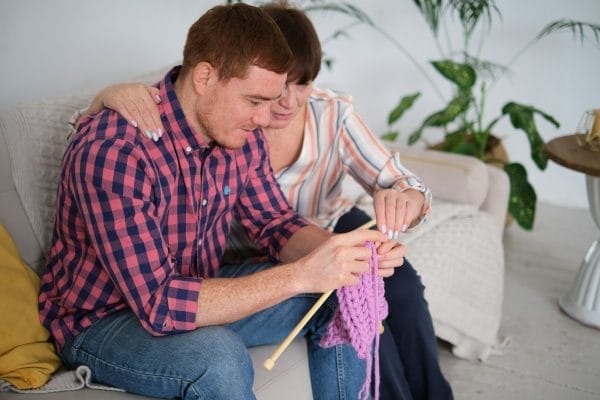Learning Spaces: From Classrooms to Creative Hubs
In the world of education, the term “learning spaces” is becoming increasingly significant. These are the environments where education takes place, and they play a pivotal role in shaping the educational experiences of students. With the advent of new pedagogical approaches and technological advancements, traditional classrooms are being transformed into dynamic, flexible, and innovative learning spaces.
This article will explore the various types of learning spaces and their impact on education.

What Are Learning Spaces?
![]()
Learning spaces are physical or virtual environments designed to facilitate learning. They can range from traditional classrooms to outdoor areas, from library corners to high-tech laboratories. The design of these spaces can influence how teaching and learning occur, by either supporting or hindering collaboration, concentration, and creativity. A well-designed learning space can inspire students and educators, fostering a more engaging and effective educational experience.
Traditional vs. Modern Learning Spaces
Historically, learning spaces have been confined to the four walls of a classroom, with rows of desks facing a teacher at the front. This setup was based on an instructional model of education, where the teacher was the primary source of knowledge. However, as educational theories evolved, the need for more interactive and student-centered learning environments became apparent. This shift led to the emergence of active learning spaces, flexible learning spaces, and creative learning spaces.
Active Learning Spaces
![]()
Active learning spaces are designed to promote engagement and participation. They are equipped with movable furniture, technology, and resources that encourage students to collaborate and take a hands-on approach to their learning. These spaces often include:
- Modular furniture that can be easily reconfigured for group work
- Interactive whiteboards and projectors for multimedia presentations
- Access to digital resources for research and experimentation
Studies have shown that active learning spaces can lead to improved academic performance and increased student satisfaction. By breaking away from the passive reception of information, students in these environments can develop critical thinking and problem-solving skills.
Flexible Learning Spaces
![]()
Flexible learning spaces take the concept of adaptability to the next level. They are designed to accommodate various teaching methods and learning styles. Such spaces might include:
- Areas for quiet, individual study
- Zones for group discussions and collaborative projects
- Spaces for relaxation and informal interaction
Flexible learning spaces can be easily transformed to suit the needs of different classes, subjects, or activities. This versatility not only supports a diverse range of learning experiences but also helps to keep students engaged by providing a change of scenery and format.
Creative Learning Spaces
![]()
Creative learning spaces are intentionally designed to stimulate imagination and innovation. They often incorporate elements such as:
- Art supplies and tools for hands-on creation
- Technology such as 3D printers and coding kits
- Areas dedicated to performance, music, and multimedia
These environments encourage students to think outside the box and approach problems with a creative mindset. In creative learning spaces, mistakes are seen as learning opportunities, and experimentation is celebrated.
Innovative Learning Spaces
![]()
Innovative learning spaces are at the forefront of educational design, integrating the latest technologies and learning theories to create environments that are truly cutting-edge. They might feature:
- Virtual reality (VR) and augmented reality (AR) for immersive learning experiences
- Robotics and engineering labs for real-world problem-solving
- Collaborative online platforms that connect students across the globe
By embracing innovation, these learning spaces prepare students for the future, equipping them with the skills and knowledge needed to succeed in a rapidly changing world.
Outdoor Learning Spaces
![]()
Outdoor learning spaces provide a unique environment for education, offering fresh air, natural light, and a connection to nature. These spaces can be used for a variety of purposes, such as:
- Science experiments that require natural elements
- Physical education and team-building activities
- Quiet reflection or reading in a peaceful setting
Research suggests that learning in natural environments can have a positive impact on student well-being and can even improve concentration and academic performance. Outdoor learning spaces offer a break from the confines of the indoor classroom and allow for experiential learning opportunities.
Real-World Examples and Case Studies
![]()
Across the globe, educational institutions are reimagining their learning spaces. For instance, a university in Scandinavia has transformed its library into a multi-faceted learning commons, complete with technology hubs, collaboration zones, and relaxation areas. In Asia, a school has designed an outdoor classroom in its garden, where students learn about biology and sustainability firsthand.
Case studies from various schools and universities have demonstrated the positive impact of these innovative learning spaces. Students report feeling more motivated and engaged, while educators find that the flexible environments allow for more dynamic teaching methods. Test scores and retention rates have seen an increase in institutions that have embraced these modern learning spaces.
Conclusion: The Importance of Learning Spaces in Education
![]()
In summary, learning spaces are a vital component of the educational landscape. As we move away from traditional, one-size-fits-all classrooms, the development of active, flexible, creative, and innovative learning spaces is leading to more personalized and effective education. Outdoor learning spaces also contribute to this diverse ecosystem, offering alternative settings that benefit both mind and body.
Investing in the design and functionality of learning spaces can have a profound impact on student outcomes. By creating environments that cater to different learning styles and foster collaboration, critical thinking, and creativity, we can equip students with the tools they need to thrive in the 21st century. The future of education is not just about what we learn, but also where we learn, making the evolution of learning spaces an exciting and essential part of educational progress.





